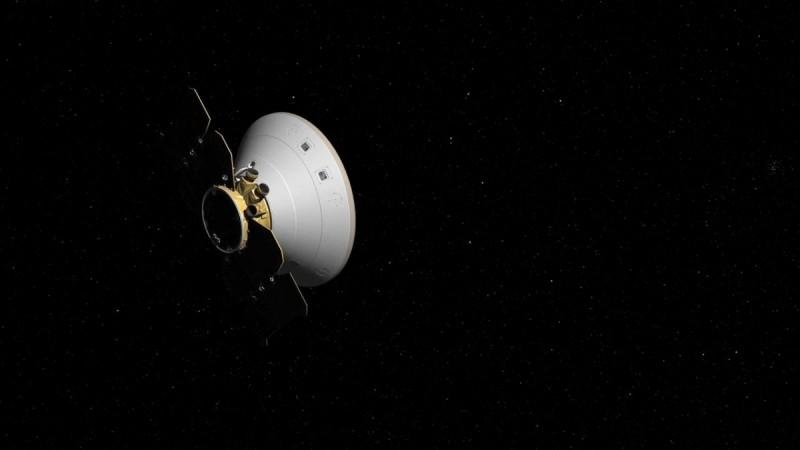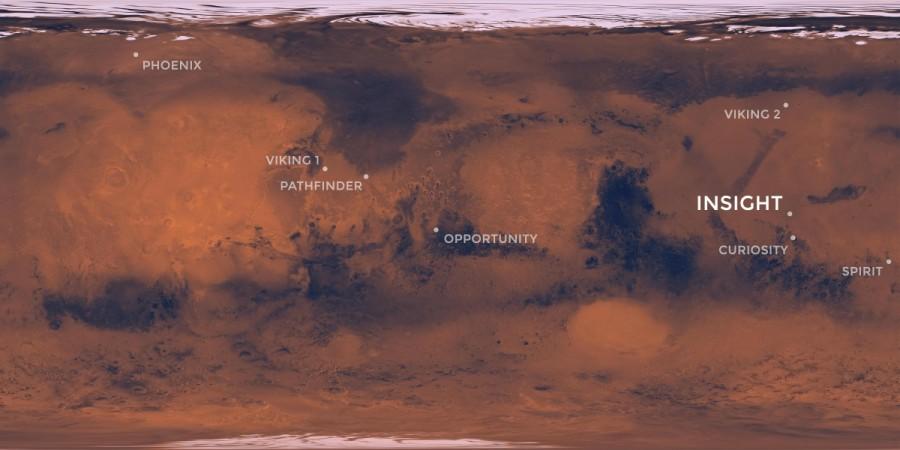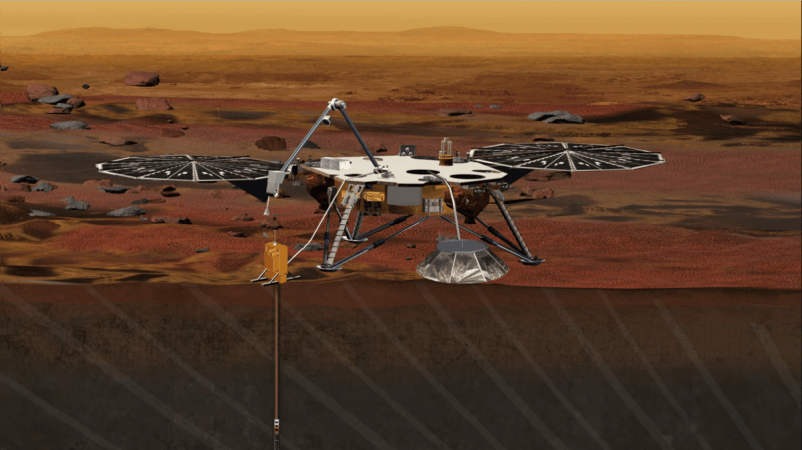
As of 20 August, NASA reports that the Mars-bound InSight lander has crossed the halfway mark in itse journey from Earth. The spacecraft, at this rate will touchdown on Mars by 26 November this year. InSight's journey to Mars, started in May on Atlas V rocket, is NASA's attempt to look inside the red planet, to try and understand Martian tectonics and gain a better understanding of the planet's layers.
At the halfway mark, all the instruments were switched on and checked , says a report released by NASA. They are all working well. It has been about 107 days since launch and in that time, the spacecraft had covered well over 277 million km, and about 98 days of flying is left. The Insight still has about 208 million km for Mars touchdown.
The craft is heading to Mars' Elysium Planitia region. It will then set up the experiment where Mars' deep interior will be scanned. InSight is an acronym for Interior Exploration using Seismic Investigations, Geodesy and Heat Transport, explains NASA.

Till the time it arrives on Mars, InSight's ground team is preparing for the spacecraft's arrival at Mars, says the report. This preparation is not just practice for the critical landing and deployment but they also ensure that the InSight's subsystems that are part of its cruise, landing and surface controls. There are also checks to see if the landers science instruments are not malfunctioning in any way.
The InSight lander's seismometer, which will detect marsquakes, was checked and the report says that ground engineers gave it a clean bill of health when tested in mid-July. Another geological apparatus, called the Seismic Experiment for Interior Structure (SEIS), a six-sensor seismometer that is designed to give a deeper view of Mars' interior make up and activity, notes the report. It works by combining two types of sensors and measure any movement in the ground over a wide range of frequencies.

"We did our final performance checks on July 19, which were successful," said Bruce Banerdt, principal investigator of InSight from NASA's Jet Propulsion Laboratory (JPL).
Among the many instruments on-board the InSight, there is also one that is designed to measure just how much heat is escaping Mars. Called Heat Flow and Physical Properties Package (HP3), it will be attached to the Martian surface and an automated hammer and mechanical mole will burrow to a depth of about 3 to 5 meters, notes the report. An array of sensors placed on the mole and a tether going from the mole to the surface will, for the first time ever calculate just precisely, the amount of heat escaping from Mars into space.
InSight's camera was also checked and a photo of the inside of the spacecraft's backshell was captured, notes NASA. "If you are an engineer on InSight, that first glimpse of the heat shield blanket, harness tie-downs and cover bolts is a very reassuring sight as it tells us our Instrument Context Camera is operating perfectly. The next picture we plan to take with this camera will be of the surface of Mars."
When the craft lands on Mars in November, its cameras will be taking the first image of Elysium Planitia in minutes after InSight touches down.

















